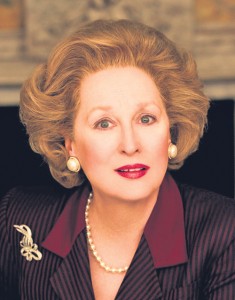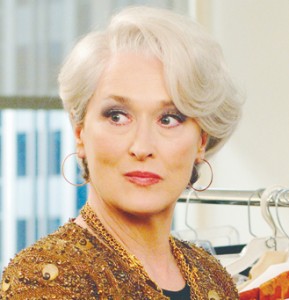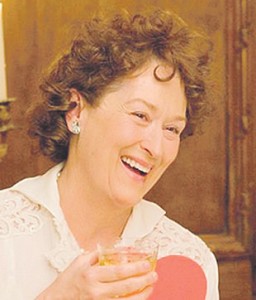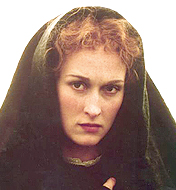Portrait of a screen artist who ‘disappears’ into her roles

STREEP. Unusual ability to transform the way she looks and talks to create a wide range of different characters, from Julia Child to Margaret Thatcher—and then some!
In 1963, an adolescent girl living a comfortable, upscale life in New Jersey discovered that she had a promising coloratura voice, and took singing lessons.
Eventually, she decided to focus on acting rather than singing, and was accepted by the prestigious Yale Drama School on a scholarship.
At Yale, she played a great variety of roles that expanded her thespic range, preparing her for a career in the theater.
Interestingly, while she first made her mark in drama, she specialized in the art of comedy at Yale!
After graduating, she made her professional debut in “Trelawny of the Wells,” directed by the acclaimed Joseph Papp, who could obviously spot exceptional talent when he saw it. Early on, Meryl Streep won several awards before acting in a full season of Shakespeare in The Park, also mentored by Papp.
Article continues after this advertisementStreep went from stage to film by way of a small role as Jane Fonda’s friend in “Julia” (1976). Next came “The Deer Hunter” (1978), for which she got both an Oscar nomination and a Film Critics Award. She then conquered television by way of the hit series “Holocaust,” which won her an Emmy!
Article continues after this advertisement(Instructively, she refused to accept the trophy, because she felt that performances should not be put up against each other for awards. —Obviously, she eventually changed her attitude about that.)
Her next film role was in “Manhattan,” followed by “The Seduction of Joe Tynan.” She then won an Oscar for “Kramer vs. Kramer,” prompting costar Dustin Hoffman to predict that she would become “the Eleanor Roosevelt of acting!” —Well, that was a bit much—but, she hasn’t done too badly, either.
It was at around this time that movie people took note of Meryl’s unusual ability to transform the way she looked and talked to create a wide range of different characters. Unlike many other actors who are happy just playing mere variations of themselves, she made it a point to “disappear” into her roles. Thus, for “The French Lieutenants’s Woman,” she adopted a British accent.
Very different
But, her genius at creating screen characters was most apparent in “Sophie’s Choice,” for which she studied Polish for three months and turned herself into a psychologically contorted wreck—so very different from her usual, equable and focused self!

Streep’s most recent portrayals have shown that her versatility at creating screen characters has become even more heightened and ambitious.
No other actress could possibly have come up with the fashion editor in “The Devil Wears Prada,” the singing and dancing mother in “Mamma Mia,” Julia Child and Margaret Thatcher, all in the same decade!
We look forward to Meryl Streep’s next screen portrayals, and thank her for reminding other actors that character rather than “personality” acting is what performance should be all about. All else is self-indulgent posturing—and preening and prancing peacocks, we are not!

